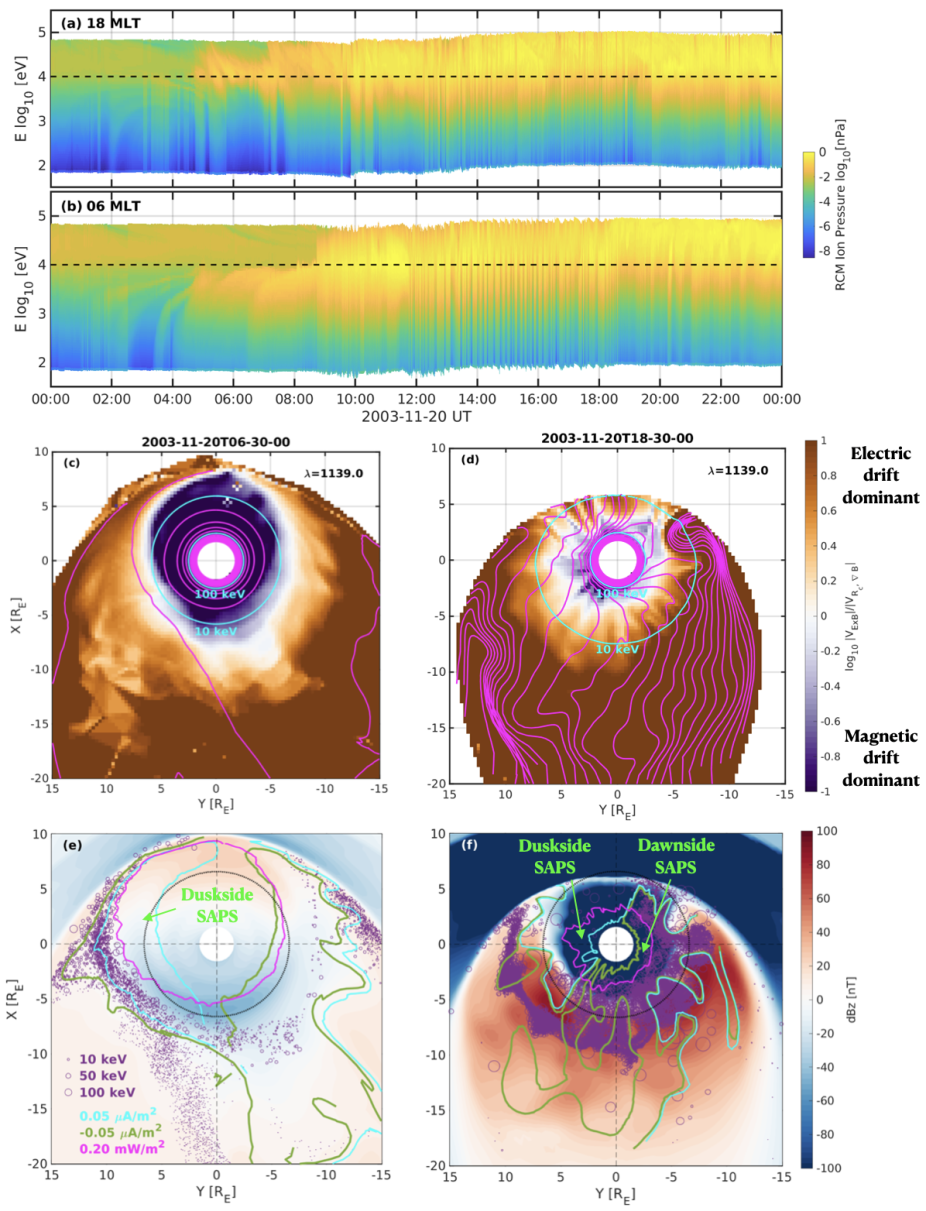
(a-b) Ring current pressure sampled at the geosynchronous orbit at 18 MLT and 06 MLT. (c-d) Ratio between electrostatic drift and magnetic drift speeds of ions with the same energy invariant. The cyan curves show contours of kinetic energy of 10 keV and 100 keV. The magenta curves show contours of effective potential separated by 20 kV, equivalent to ion drift path. (e-f) Equatorial distributions of test particle protons 30 minutes after they were released at 06 UT and 18 UT. The colorbar shows residual magnetic field $B_Z$ with dipole background subtracted. The green, cyan, and magenta curves are ionospheric boundaries of upward and downward FACs, and equatorward boundary of electron precipitation, respectively, mapped from the northern hemisphere along geomagnetic field lines
Solar eruptions of mass and magnetic field can trigger geospace storms. The most well-known storm phenomenon is the aurorae in the Earth's high latitude upper atmosphere. Below the latitude of auroral boundary, i.e., in the subauroral region, westward plasma flows from hundreds of m/s to a few km/s are often observed from afternoon to midnight during geomagnetically active periods. The fast plasma flows have important space weather effects due to their very large speed over a narrow latitudinal range. It was newly discovered that similar fast eastward plasma flows exist on the dawnside subauroral region during an extreme geomagnetic storm on 20 November 2003. However, origin of the dawnside subauroral fast flow is still a mystery. This study demonstrates that the dawnside subauroral fast flow only occurs during very strong geomagnetic storms when the magnetospheric ions can be transported to and accumulate in the morning sector to build up plasma pressure and currents to generate the subauroral plasma flow in the ionosphere. This mechanism is important for us to understand how the geospace responds to geomagnetic storms, especially when the storm activity level is extremely high that it may have severe adverse effects on human society and infrastructure.